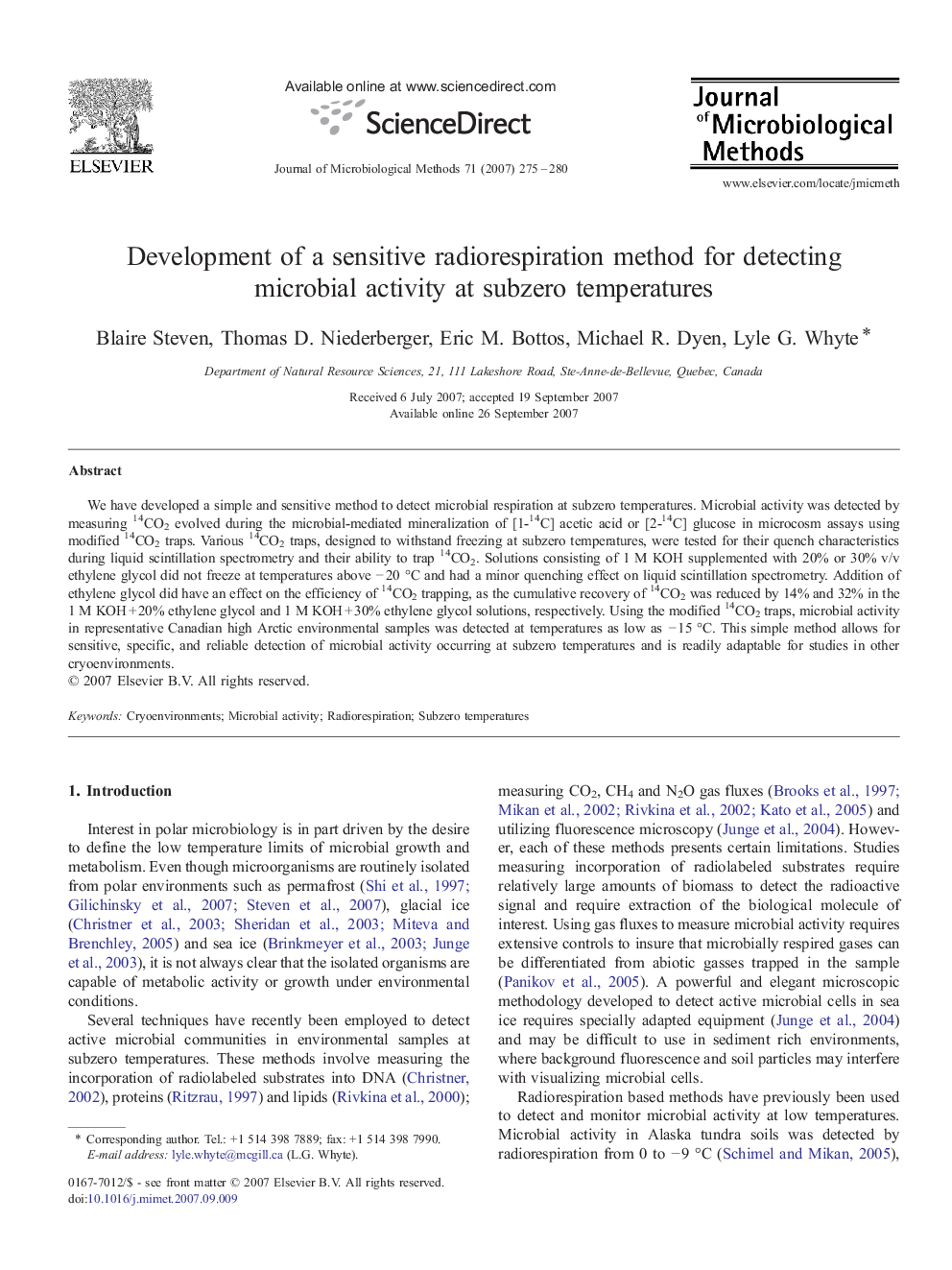| Article ID | Journal | Published Year | Pages | File Type |
|---|---|---|---|---|
| 2091067 | Journal of Microbiological Methods | 2007 | 6 Pages |
We have developed a simple and sensitive method to detect microbial respiration at subzero temperatures. Microbial activity was detected by measuring 14CO2 evolved during the microbial-mediated mineralization of [1-14C] acetic acid or [2-14C] glucose in microcosm assays using modified 14CO2 traps. Various 14CO2 traps, designed to withstand freezing at subzero temperatures, were tested for their quench characteristics during liquid scintillation spectrometry and their ability to trap 14CO2. Solutions consisting of 1 M KOH supplemented with 20% or 30% v/v ethylene glycol did not freeze at temperatures above − 20 °C and had a minor quenching effect on liquid scintillation spectrometry. Addition of ethylene glycol did have an effect on the efficiency of 14CO2 trapping, as the cumulative recovery of 14CO2 was reduced by 14% and 32% in the 1 M KOH + 20% ethylene glycol and 1 M KOH + 30% ethylene glycol solutions, respectively. Using the modified 14CO2 traps, microbial activity in representative Canadian high Arctic environmental samples was detected at temperatures as low as − 15 °C. This simple method allows for sensitive, specific, and reliable detection of microbial activity occurring at subzero temperatures and is readily adaptable for studies in other cryoenvironments.
